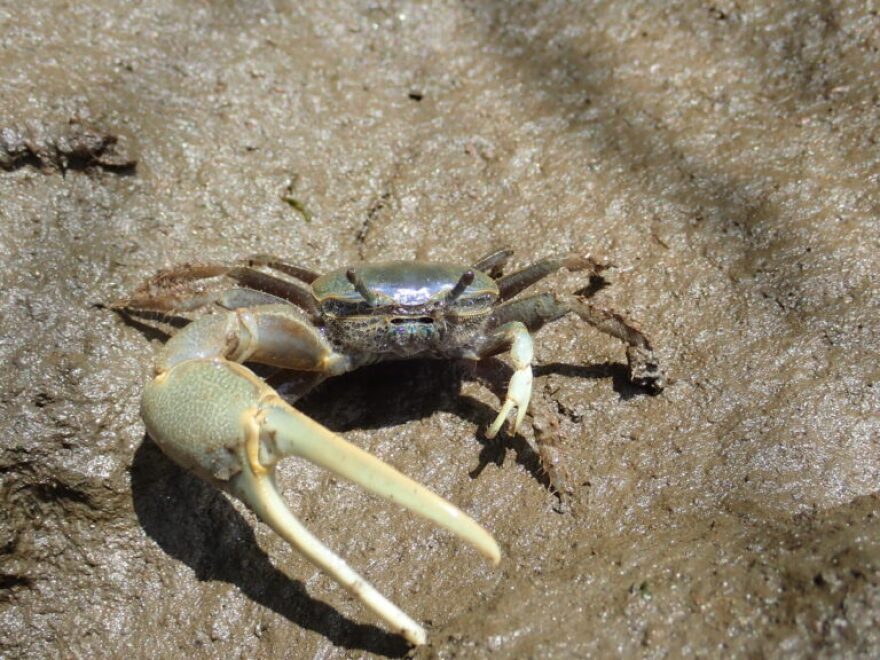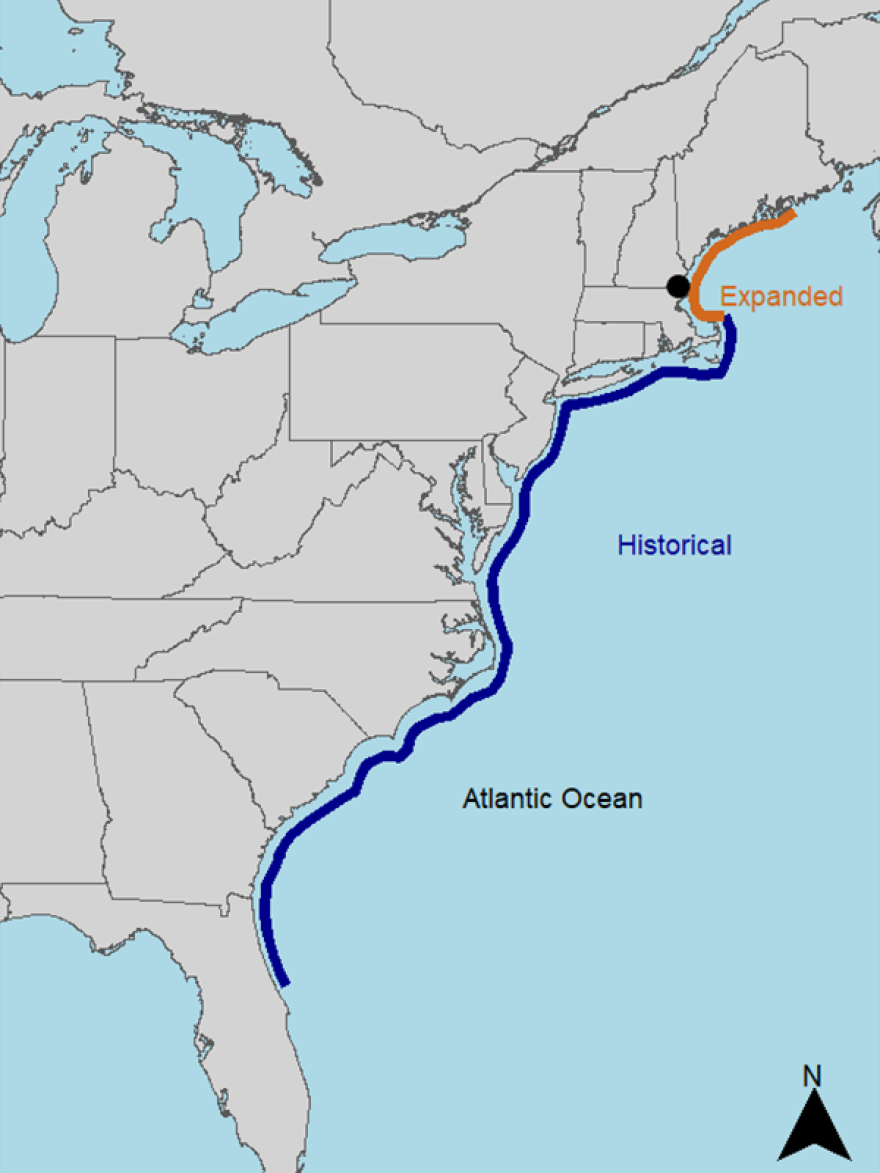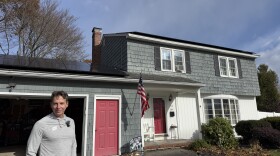This story was originally produced by the New Hampshire Bulletin, an independent local newsroom that allows NHPR and other outlets to republish its reporting.
David Johnson had been working in the salt marshes of Plum Island, just south of New Hampshire’s border, for about a decade when he spotted an unusual small crustacean descend quickly into a burrow in the muddy banks.
It was a thumb-sized Atlantic mud fiddler crab with one distinctively large claw. The sighting, he thought, was very strange. Fiddler crabs weren’t supposed to be north of Cape Cod, let alone Boston.
The year was 2012, and a marine heatwave had just occurred. It didn’t take long for Johnson to spot the crabs in New Hampshire, too.
“What I didn’t realize is what I was really looking at was climate change,” said Johnson, an ecologist at William & Mary’s Virginia Institute of Marine Science.
The single glimpse of this unlikely inhabitant was the impetus for years of related queries, in which Johnson and other researchers determined fiddler crabs have been moving north from their historical range of northern Florida to Cape Cod as a result of ocean warming.
It’s not a surprise they’ve shown up along the coast of New Hampshire and up to central Maine, as the Gulf of Maine is one of the fastest-warming ocean regions on the planet.

Johnson uses the term “climate migrants” when referring to species like fiddler crabs, blue crabs, and black sea bass, all creatures that have seen expanded ranges as a result of warming waters. The term is often used to describe people forced from their homes due to climate-related disasters and environmental shifts. But it also applies to the countless animal species who are finding themselves in uncharted territory because of warming.
“Throughout the world we’ve documented thousands of these climate migrants, but we’ve only just begun to discover how they’re impacting the ecosystems they move into,” Johnson said. “In this case, how does the arrival of this thumb-sized crab impact the marsh?”
That’s the question Johnson and his Virginia Institute of Marine Science colleague Kayla Martínez-Soto set out to answer as part of a study recently published in the journal Ecology. They did much of their research in the Great Marsh, the largest continuous stretch of salt marsh in New England, extending from Gloucester to Salisbury, Massachusetts.
Looking at the expanded northern range of fiddler crabs, they found the crabs’ presence to be associated with a 40 percent drop in grass biomass, specifically cordgrass commonly found in salt marshes. In addition, they found the biomass of roots and rhizomes to be 30 percent lower.

The reduction in plant growth isn’t because fiddler crabs eat or kill the live grass, Johnson explained. But rather, the belief is their burrowing damages plant roots, “causing the plant to invest less in growth above ground.”
In terms of future consequences, Johnson outlined two. First, cordgrass and salt marsh plants are critical to keeping sea level rise at bay. Salt marshes can keep up with rising seas by building vertically, “the same way you might raise your house.”
“Plants are critical to this process because every time the tide comes in, they trap little bits of dirt and sediment,” Johnson said. “It builds up this layer. The roots below ground add soil volume, they add a layer of dead plants underneath, and that helps build up, as well.”
Second, Johnson said salt marshes are really good at trapping carbon and locking it away in the soil.
“You can think of a salt marsh as a giant compost pile where plants have been buried for centuries,” he said. “Once you have a fiddler crab starting to poke holes in there …”
Johnson and Martínez-Soto’s findings may seem cautionary, and perhaps for a few decades they will be. But the fiddler crabs’ typical range may provide some answers as to how these new occupants might settle into the neighborhood further down the line.
“In the historical range south of Cape Cod, salt marshes and grass and fiddler crabs have lived happily together for thousands of years,” Johnson said. “And south of Cape Cod, the research has said that when fiddler crabs are present, grass grows better. They help plants grow.”
Johnson’s hypothesis is that fiddler crabs and plants in the historical range have an ecological and evolutionary history, meaning the plants have adapted to the crabs’ digging over millennia. In northern Massachusetts, New Hampshire, and Maine, salt marsh plants are different and don’t have that adaptation: the fiddler crabs are strangers.
“I don’t necessarily think it’s a doom and gloom story because I think the plants will eventually adapt,” he said. “And we have evidence cordgrass can adapt to new conditions within decades. Maybe not within the next five years, but maybe in the next 20 years.”
New Hampshire Bulletin is part of States Newsroom, a network of news bureaus supported by grants and a coalition of donors as a 501c(3) public charity. New Hampshire Bulletin maintains editorial independence. Contact Editor Dana Wormald for questions: info@newhampshirebulletin.com. Follow New Hampshire Bulletin on Facebook and Twitter.







